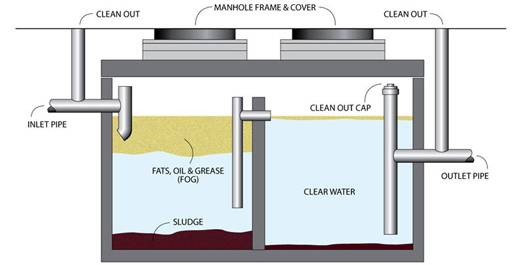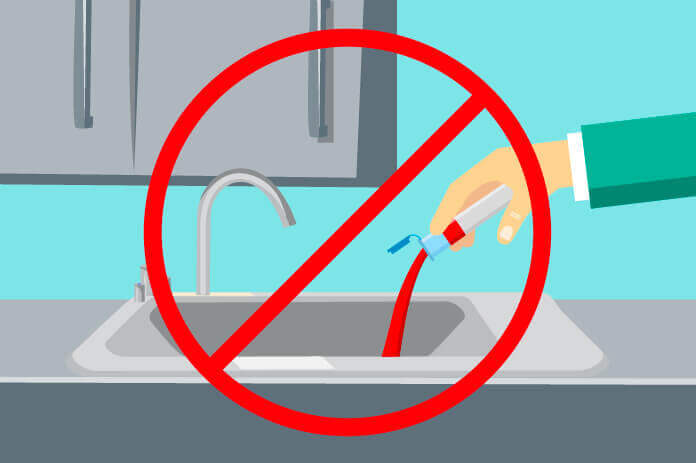Comprehensive Liquid Waste Disposal: Solutions for Homes and Companies
Comprehensive Liquid Waste Disposal: Solutions for Homes and Companies
Blog Article
Exactly How Liquid Waste Disposal Functions: A Detailed Review of Strategies and Technologies Utilized

Summary of Fluid Waste Kind
The intricacy of liquid waste kinds necessitates an extensive understanding of their features and effects for disposal. Fluid waste can generally be classified right into a number of types, including industrial, community, farming, and contaminated materials. Each category exhibits distinct residential properties, needing certain management strategies to minimize environmental and wellness risks.
Industrial fluid waste originates from manufacturing procedures and often includes a variety of contaminants, such as hefty metals, solvents, and organic compounds. Community liquid waste, primarily consisting of wastewater from families and business facilities, consists of raw material, nutrients, and microorganisms (industrial wastewater treatment). Agricultural fluid waste, including overflow from farms, might contain fertilizers, pesticides, and pet waste, positioning threats to water quality and ecological communities
Harmful liquid waste is defined by its poisoning, reactivity, or prospective to create harm. This group includes materials like acids, bases, and specific chemicals that necessitate rigorous handling and disposal protocols. Recognizing these diverse fluid waste kinds is essential for creating effective disposal approaches and making sure compliance with ecological regulations. Appropriate category and characterization are vital for implementing ideal treatment methods and minimizing the negative effect on public health and the setting.
Physical Treatment Techniques

Testing is the first action, where larger bits and particles are gotten rid of from the fluid waste making use of displays or grates. This process safeguards downstream equipment from damage and ensures smoother operation. Adhering to testing, sedimentation makes use of gravitational force to separate solids from fluids. In sedimentation containers, larger particles work out near the bottom, developing a sludge layer, while the cleared up liquid can be further dealt with.
Filtration is an additional crucial approach that includes passing the liquid via porous products, such as sand or membranes, to record smaller sized particles. This action improves the quality of the fluid, making it ideal for succeeding treatment procedures.

Chemical Treatment Strategies
Chemical treatment strategies are necessary for effectively managing fluid waste, particularly in attending to dissolved and colloidal pollutants that physical approaches may not adequately eliminate. These strategies use numerous chemical agents to counteract, precipitate, or transform unsafe substances right into much less damaging kinds.
One common technique is coagulation and flocculation, where chemicals such as alum or ferric chloride are included to advertise the aggregation of put on hold fragments. This process improves sedimentation, enabling simpler removal of the resulting sludge. Additionally, oxidation you can try these out processes, utilizing representatives like chlorine or ozone, are employed to break down complicated organic substances and virus, rendering the waste much safer for discharge or further treatment.
Neutralization is an additional critical method, which changes the pH of acidic or alkaline waste streams to neutral degrees, preventing potential damage to downstream systems and the setting. In addition, advanced oxidation processes (AOPs) utilize combinations of oxidants and ultraviolet light to degrade relentless contaminants, attaining a greater level of therapy efficiency.
Biological Treatment Processes
Biological treatment processes play a vital role in the management of liquid waste by utilizing microorganisms to decompose organic issue and minimize impurity levels. These procedures can be extensively categorized right into aerobic and anaerobic treatments, each employing particular microbial communities to achieve reliable waste deterioration.
Cardio treatment includes making use of oxygen to help with the break down of organic materials by bacteria. This process is typically carried out in turned on sludge systems, where oygenation tanks supply a favorable environment for microbial development, resulting in the oxidation of natural pollutants. The resultant biomass can be separated from treated effluent through sedimentation.
In contrast, anaerobic therapy takes place in the absence of oxygen, counting on various microorganisms to break down raw material. This technique is particularly advantageous for high-strength waste, as it creates biogas, an eco-friendly power resource, while minimizing sludge production. Technologies such as anaerobic digesters learn this here now are frequently utilized in industrial and municipal applications.
Both cardio and anaerobic biological therapies not only decrease the environmental click this impact of fluid waste however also assist in resource healing, making them crucial elements of sustainable waste administration strategies. Their performance, efficiency, and flexibility sustain their extensive application across different fields.
Emerging Technologies in Disposal
Ingenious strategies to liquid waste disposal are swiftly evolving, driven by developments in innovation and an increasing emphasis on sustainability. Amongst these arising innovations, membrane bioreactors (MBRs) have actually obtained traction for their ability to integrate organic therapy with membrane layer purification, resulting in high-grade effluent that can be reused in various applications. MBRs allow smaller footprints and a lot more reliable procedures contrasted to typical systems.
Another promising development is the usage of anaerobic digestion combined with nutrient recovery technologies, which not only treats liquid waste however likewise generates biogas and recovers important nutrients like nitrogen and phosphorus. This dual benefit improves source effectiveness and decreases environmental impact.
Additionally, progressed oxidation procedures (AOPs) are being taken on for the destruction of intricate natural contaminants. These methods make use of effective oxidants and stimulants to damage down pollutants at the molecular level, offering a very efficient option for difficult waste streams.
Furthermore, the integration of expert system and artificial intelligence in waste management systems is optimizing functional effectiveness and predictive upkeep, resulting in reduced prices and boosted environmental conformity. These innovations reflect a significant change towards even more sustainable and efficient liquid garbage disposal methods.
Conclusion
In final thought, reliable liquid waste disposal necessitates an extensive understanding of different techniques and innovations. By constantly progressing these methodologies, it becomes possible to deal with the expanding challenges associated with liquid waste, eventually adding to ecological security and source recuperation.
Liquid waste disposal is an important aspect of environmental management, requiring an extensive understanding of different methods and modern technologies customized to various waste kinds. Liquid waste can extensively be classified right into a number of kinds, consisting of commercial, community, agricultural, and harmful waste. Agricultural fluid waste, including overflow from farms, may contain fertilizers, pesticides, and animal waste, posing risks to water quality and communities.
Various physical treatment techniques play a vital function in managing liquid waste effectively - industrial wastewater treatment.In conclusion, reliable liquid waste disposal requires an extensive understanding of different techniques and modern technologies
Report this page